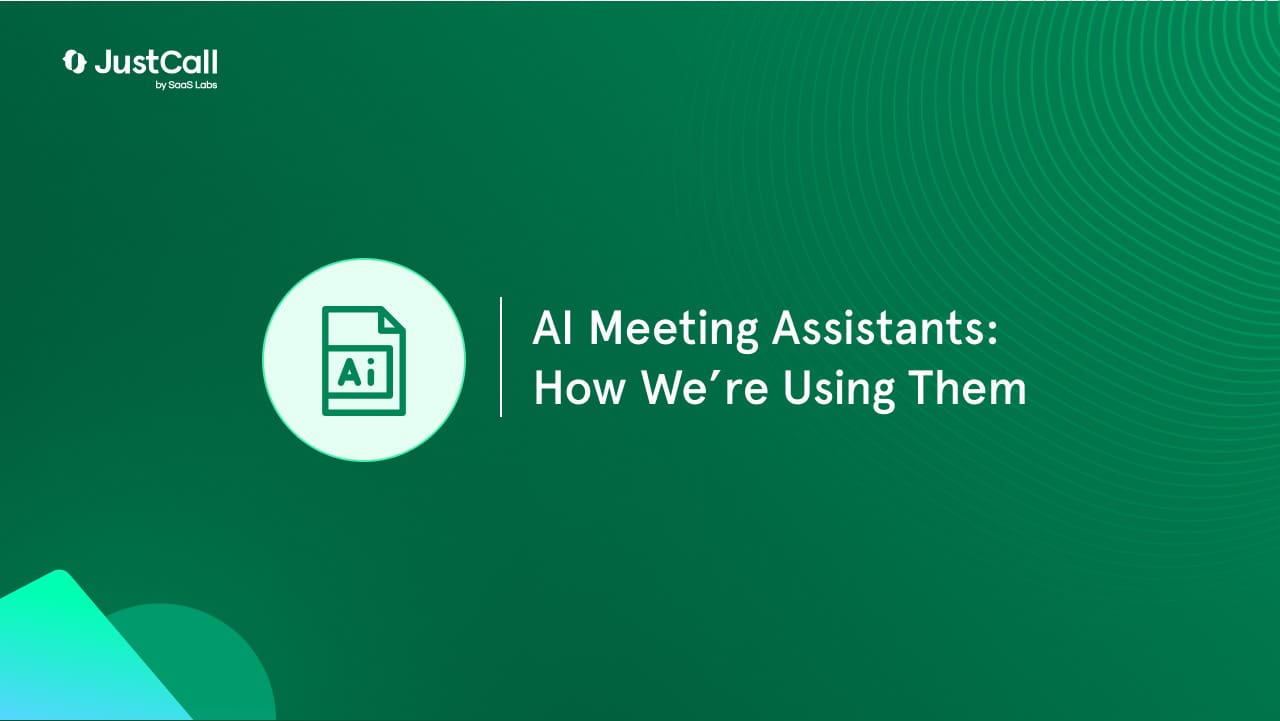You can’t really escape meetings at work. But you can avoid the mindless note-taking that comes with it—with an AI meeting assistant.
In this guide, we will decode virtual meeting assistants and how you can use them to be more productive and multitask without losing your mind (or time).
What Is an AI Scheduling Assistant?
An AI scheduling assistant is a technology that helps you manage your appointments and tasks and run meetings more efficiently. It’s like having a personal assistant but in a digital format.
This AI-powered tool takes care of tedious work such as:
- finding suitable time slots and coordinating with others
- taking notes during the meeting
- driving a scheduling process
All in all, an AI meeting assistant ensures that you never miss an important meeting again.
4 Use Cases of an AI Assistant for Meetings
Here are four use cases that your AI meeting assistant can help you with and elevate your meeting experience:
Use Case 1: Transcribing a Live Meeting
Useful for: Organized professionals and meticulous note-takers who want accurate meeting records.
An AI meeting assistant can:
- Listen to the meeting in real time and transcribe the discussions accurately. This means you don’t need to put in the added effort of taking detailed notes. Let AI do the grunt work for you!
- Eliminate the need for manual transcription or recording and offer a reliable written record of the meeting that you can come back to later.
- Highlight important points, action items, and decisions within the transcription, and review as well as follow up with ease.
Tips for Optimizing Your Meeting AI Assistant Tool:
- Activate the live transcription feature of your AI assistant to automatically transcribe discussions in real time.
- Position the microphone/speakerphone close to participants for clearer audio input.
- Encourage participants to speak clearly and at a moderate pace for improved transcription accuracy.
- Take advantage of timestamped transcriptions to easily locate and reference specific discussions or decisions.
Use Case 2: Real-Time Sentiment Analysis
Useful for: Customer-facing teams and service-oriented professionals who want exceptional customer interactions.
By integrating with communication platforms, an AI meeting assistant can analyze the sentiment of customer interactions in real time. It can:
- Detect customer satisfaction, frustration, and the full spectrum of emotions and enable customer-facing teams to adapt their approach with greater flexibility.
- Provide immediate feedback on sentiment and enable prompt resolution of issues.
- Identify positive sentiment cues (think: testimonials and success stories) for marketing campaigns and personalized ads.
Tips for Optimizing Your Meeting AI Assistant Tool:
- Integrate your AI meeting assistant with your existing communication platform and configure it to monitor speech patterns, tone, and keywords and accurately gauge sentiment.
- Adapt your approach based on the sentiment analysis results to address negative feedback proactively.
Use Case 3: Note-taking and Post-meeting Action Items
Useful for: Productive professionals and multitaskers who value effective meeting follow-ups.
During the meeting, an AI assistant can automatically take notes and capture critical data points.
You don’t need to worry about comprehensive note-taking. Instead, you can focus on active participation and engagement. Plus, the AI assistant can convert meeting notes into actionable tasks. All you need to do is integrate with a project management or task management tool of your choice.
You can also set reminders for post-meeting action items and stay organized without missing out on follow-ups.
Tips for Optimizing Your Meeting AI Assistant Tool:
- Leverage the AI assistant’s reminder features to set deadlines and reminders for post-meeting action items.
- Share meeting notes and action items with relevant stakeholders using the AI assistant’s collaboration features. This reinforces clear communication and accountability within the team.
Use Case 4: Automated Meeting Scheduling
Useful for: Busy professionals and scheduling enthusiasts looking to streamline the meeting scheduling process.
An AI meeting assistant can access your calendar and scheduling preferences (with your permission, of course) and automate the process of finding suitable meeting times. It can also suggest available time slots to all participants. This means you won’t have to engage in pointless back-and-forth communication for scheduling.
That’s not where its usefulness ends. The AI tool can also send meeting invitations and reminders on your behalf, streamlining the administrative tasks and saving you precious time to problem-solve.
Tips for Optimizing Your Meeting AI Assistant Tool:
- Train the AI assistant on your preferred meeting times, durations, and availability to ensure accurate scheduling.
- Take advantage of the AI assistant’s integration with email or communication platforms to send meeting invitations and reminders and lower your administrative burden.
Use Powerful Conversation Insights to Drive Call Center Success
How to Use the Data Collected from the AI Meeting Assistant Tool?
Let’s address the elephant in the room and understand how can the data collected by an AI meeting manager service be helpful.
You can leverage the data collected from an AI meeting assistant tool to:
- Enhance the customer experience: You can analyze the sentiment analysis data collected during customer interactions to gain insights into customer satisfaction levels, pain points, and areas for improvement. This will empower you to deliver a more personalized and satisfactory customer experience and a targeted marketing campaign.
- Streamline internal collaboration: AI meeting tools can foster accountability by assigning and tracking action items and building a more productive work environment. The collected data can be used to:
- identify recurring topics
- areas of focus
- bottlenecks in the decision-making process
This leads to process improvements and effective collaboration among team members.
- Optimize meeting efficiency and productivity: You can also analyze data related to meeting duration, frequency, and attendee participation to identify areas where meetings can be streamlined and made more efficient. In addition, the data can be used to:
- optimize meeting agendas
- identify unnecessary meetings
- ensure that the right stakeholders are involved, reducing meeting fatigue in the process
The Future of AI for Meetings
Given that 15% of time spent in meetings is wasted time, managers must do everything in their power to boost employee productivity. This is where an AI meeting scheduler is well worth the investment.
Plus, it’s a given fact that meetings are here to stay. No matter how advanced communication technology gets, there’s something about face-to-face meetings that cannot be replaced—or at least not entirely. So take advantage of this powerful tool and say goodbye to wasted time for good.












